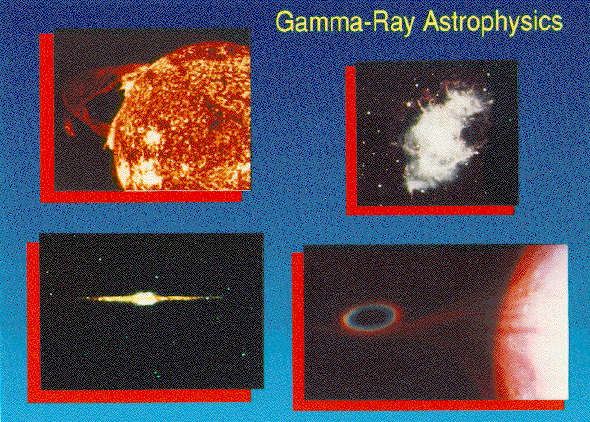Gamma-Ray Astrophysics

Click image for larger view
Gamma rays are probes of very high-energy events in the cosmos. This slide illustrates four astrophysical sites of high-energy events which can be studied at gamma-ray energies. Solar flares (upper left) are now known to rapidly accelerate particles to very high energies producing gamma rays from nuclear de-excitation and neutron capture reactions as well as positron-electron (matter-antimatter) annihilation. The Crab Nebula (upper right), the remnant of a nearby supernova explosion, along with its associated pulsar, produce high-energy electrons which generate gamma rays through interactions with strong magnetic fields. Collisions of energetic cosmic rays with clouds of gas in our Galaxy, the Milky Way (lower left), are another source of gamma rays. Finally, gravitational acceleration of matter falling into extremely compact objects such as neutron stars and black holes (lower right) can heat material to extremely high temperatures producing sources of celestial gamma rays.
If you have a question about CGRO, please contact us via the Feedback form.

